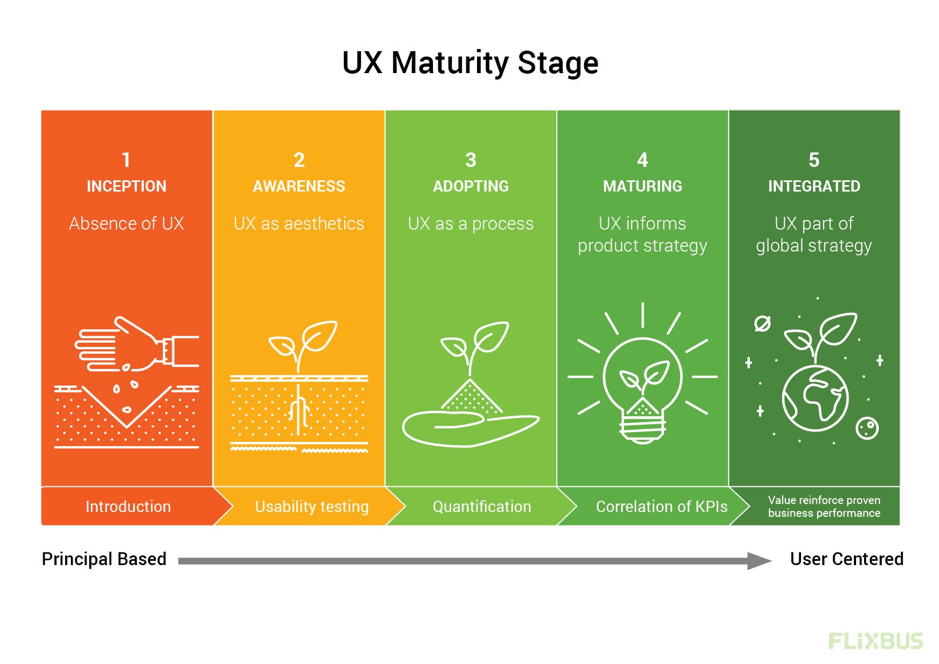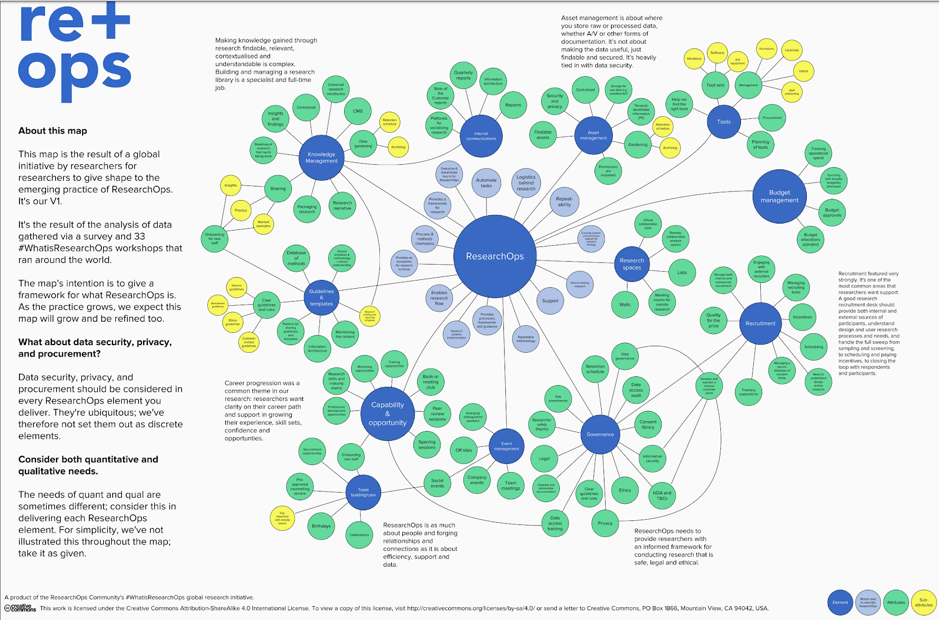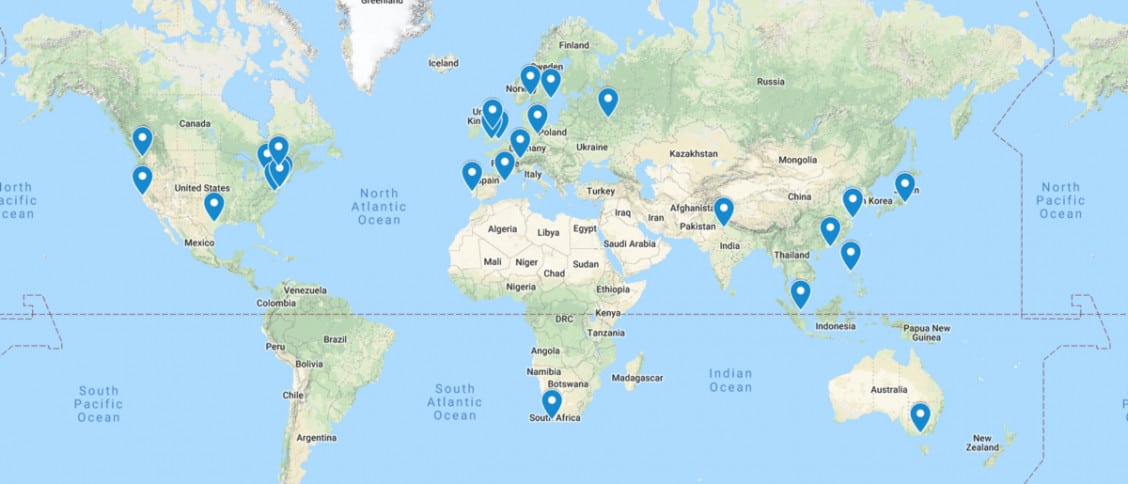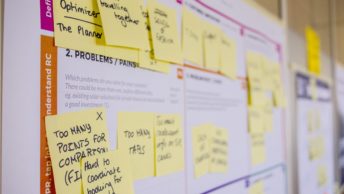It was only a few years ago that many of us working as user experience (UX) professionals were still regularly justifying the importance of user research, and explaining how it might integrate into development cycles. That contrasts strongly with the landscape of user experience and user research in 2019, which has significantly changed. While some organisations are still working out if user research is something that needs to be done, others are powering ahead with customer-centred cultures backed by mature product teams with iterative, human-centred approaches.
User research is now not only a deeply integrated part of business, but also using ResearchOps to align with the DevOps practices used by development teams, and DesignOps functions of production teams. So why is there such a broad range of different UX maturities across our professional landscape? And what specific role might ResearchOps play in supporting this maturity more equitably?
How UX maturity can be measured
As the maturity of an applied user experience culture within an organisation grows and adapts over time, the specific approaches that people use for user research often also change. This reflects their progression through different stages of maturity. Knowing where your organisation and your team sit within these definitions of maturity is useful for helping you tailor a realistic approach to research and design for your stage of maturity. They can enable your team to effectively meet organisational strategic goals, while still remaining human centred. They can also help executives understand what UX people do, and what ‘good’ looks like.
‘UX Maturity Models’ are objective frameworks that enable organisations to categorise the quality and effectiveness of their user experience processes and practices. There are a number of UX maturity models out there, with most models defining a spectrum from low maturity (where user research is completely absent) up to the high maturity end (where research is well integrated into strategic decision making).
Bonus Resources:
– ‘How do you measure UX maturity?’ An empirical approach to validating and refining different UX Maturity Models — Jeff Sauro, MeasuringU
– ‘UX Maturity Models – A Collection’ by Natalie Hanson, anthropologist and UX professional.

ResearchOps framework as an indicator of UX maturity
As user research becomes more valued and more integrated within organisations, it starts occurring at scale… but along with that success, we are also confronted with a challenge where the mechanisms and strategies may not exist to support the growing user research practice. This is the problem that ResearchOps seeks to address.
Kate Towsey was the instigator of the #WhatIsResearchOps global workshops and research initiative, and a founder of the ResearchOps Community, an organised group of people openly learning what it means to build and manage research operations. Together, this resulted in the definition: “ResearchOps is the mechanisms and strategies that set user research in motion. It provides the roles, tools and processes needed to support researchers in delivering and scaling the impact of the craft across an organisation.” [source]

The ResearchOps framework developed in 2018 by the ResearchOps community is a good reference of the breath of ResearchOps. The framework defines the key elements of the ResearchOps practice, such as recruitment, knowledge management, governance and more. This framework is the result of analysis from a global survey as well as 33 workshops held around the world to help answer the question ‘What is ResearchOps?’. While the underpinning concepts of ResearchOps are not new, there is an increasing level of awareness and formal recognition of ResearchOps-specific roles. Establishing and growing a ResearchOps team is an indicator that an organisation is towards the mature end of most UX maturity models.
Bonus Resources:
– ‘The Eight Pillars of User Research’ How can you get started with ResearchOps unless you understand what is important to User Researchers? Emma Boulton explains.
– ‘Democratisation of UX Insights: What Does This Really Mean?’ Remote teams, online research tools, and efficient access to use feedback compel action at the operational level via ResearchOps. Alfonso de la Nuez
Deepening organisational maturity
It’s important to recognise that being on the mature end of various UX maturity models doesn’t mean that the UX practitioner’s job is done. It’s now about deepening the organisational maturity (rather than just shifting it up the maturity model). There are a number of factors to consider when going for depth in relation to ResearchOps. Some of these include:
- Requiring different mechanisms and strategies to support User Researchers, versus People Who Do Research (PwDR – a term coined by Kate Towsey). While it is ideal to have highly skilled user researchers doing research, the reality for large organisations often means that a large number of non-researchers are doing the research. They require different types of support to help move towards better quality research so that PwDR can conduct research on their own without support.
- Building and using an effective knowledge management system. We generate an immense amount of information in our research activities but turning information into valuable knowledge and insights that can be actioned and mined over time is a difficult process. User research repositories and libraries are all the rage at the moment but this is incredibly difficult to build and manage. Having access to a good tool to help with this is important but don’t forget to start with the user needs.
- Building research capability. There is often a shortage of highly skilled user researchers and ResearchOps people. Good people are an investment, and building research capability is one area that needs focus.
- Bringing together and supporting qualitative and quantitative research, particularly in relation to Big Data.
- Cost, quality and the value of research. As ResearchOps centralises a number of the operational processes and costs of research, it becomes more evident how much it costs to do research across the organisation. This quickly changes the conversation to the quality of research being conducted, the value it has for organisational strategic and service decision making process, and the impact the research is making.
Bonus Resource:
– How to Grow User Research in your organisation Nikki Anderson, a qualitative user experience researcher.
Extending UX maturity
A ResearchOps practice is certainly not the only indicator of UX maturity of an organisation, but it is definitely a factor, particularly for larger organisations. A ResearchOps practice is just the start of the journey – there is so much growth in this space. If you want to learn more about ResearchOps, please join the global ResearchOps community and contribute as we are all on the journey together.





